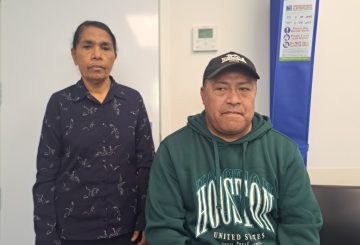Sự “giống nhau” của phong cách, âm nhạc, nghệ thuật và ẩm thực đang trở nên rõ ràng hơn, theo nhà văn Kyle Chayka của New Yorker. Trong cuốn sách mới của mình, Filterworld: How Algorithms Flatbed Culture, Chayka lập luận rằng các thuật toán, hướng sự chú ý của chúng ta vào những gì hoạt động tốt nhất cho các nền tảng kỹ thuật số, là nguyên nhân. Các thuật toán này được nhìn thấy trong các tìm kiếm của Google, nguồn cấp dữ liệu Facebook và quảng cáo trực tuyến, và chúng đã dẫn đến giảm việc ra quyết định cá nhân.
Chayka muốn mọi người hiểu cách những lực lượng này định hình thị hiếu của chúng ta và ngừng cho phép các công thức do máy tính tạo ra quyết định trải nghiệm và lựa chọn của chúng ta. Thuật ngữ “thế giới lọc” đề cập đến môi trường được tạo ra bởi các thuật toán được điều chỉnh theo những gì chúng ta có thể muốn tiêu thụ. Chayka giải thích rằng các thuật toán này đánh giá dựa trên sự tham gia, dẫn đến việc củng cố tính đồng nhất.
Chayka lưu ý rằng ảnh hưởng của các thuật toán vượt ra ngoài các nền tảng kỹ thuật số như YouTube, Spotify hoặc Netflix và vào các không gian vật lý như quán cà phê và nhà hàng. Khi các quyết định tiêu dùng của chúng tôi ngày càng chuyển sang trực tuyến, các không gian vật lý đã bắt đầu thích ứng với tính thẩm mỹ trực tuyến phổ biến. Chayka nhớ lại việc tìm thấy tính thẩm mỹ tương tự trong các cửa hàng cà phê trên khắp thế giới, đặc trưng bởi đồ nội thất bằng gỗ cải tạo, bánh mì nướng bơ trong thực đơn và nghệ thuật pha cà phê.
Trong khi những người gác cổng thông tin luôn tồn tại, theo truyền thống dưới dạng các đài truyền hình, tạp chí và báo chí, Chayka cảnh báo rằng việc sử dụng các thuật toán như những người gác cổng mới sẽ gây ra những vấn đề riêng của nó. Ông lập luận rằng các thuật toán thiếu cảm xúc, sự sáng tạo và tâm hồn con người, và trong khi chúng được tiếp thị như cung cấp các đề xuất được cá nhân hóa, chúng thường quảng bá những gì thuận tiện nhất cho nền tảng. Ví dụ, Netflix điều chỉnh hình thu nhỏ của các chương trình và phim để làm cho chúng hấp dẫn hơn, thao túng người xem nghĩ rằng họ thích những gì đã có.
Chayka thừa nhận rằng việc khám phá các thuật toán đã khiến anh đặt câu hỏi về sở thích của chính mình, đặc biệt là trên truyền hình, vì anh thường xem những gì được đề xuất mà không biết liệu nó có thực sự khiến anh cảm động hay không.





























































